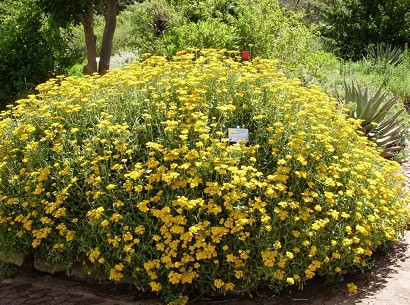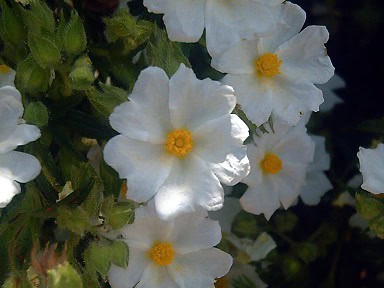At one point, even MSM was an obscure acne remedy. This sulphurous molecule is formed when dimethyl sulfide, which creates the sea’s classic smell, evaporates with water and mixes with ozone in the atmosphere, eventually raining back to Earth and infiltrating everything. Not only was this ocean-surfing molecule not on store shelves in capsule form, but nobody knew it existed.
Nowadays, MSM is popular for strengthening joints, particularly of racehorses, and many acne patients are experimenting with its potent anti-inflammatory properties. It’s fully mainstream, but the gears of clear skin research are still clunking away, and there are now numerous herbal remedies in the stage that MSM once was – barely researched and highly promising.
Here’s 9 promising herbal remedies which are obscure in the skincare world, and have only received studies on acne starting in 2019.
One – impepho
A South African plant which is commonly burnt as incense to summon ancestors, due to its overpowering aroma. Very few Americans have heard of it, but bundles of impepho twigs strapped together are sold in market stalls all over KwaZulu-Natal (AKA Zululand).
Impepho (Helichrysum odoratissimum) grows on grassy slopes below high, crumbling cliffs. It reaches 30-50cm high and has golden yellow leaves. For millennia, this densely flowering plant has been hiding a secret. According to a 2020 study, impepho has one of the most distinctive combinations of skin-enhancing abilities around. Firstly, both impepho leaves and stems reduced colonies of p,acnes bacteria, less effectively than the antibiotic tetracycline, yet still powerfully.
Most impressive was how impepho cut through p.acnes’ biofilms. These are tightly packed and organised structures that bacteria construct, to make infestations infinitely more stubborn, whether on steel hospital utensils or an acne patient’s face. In reducing biofilms, impepho actually beat the tetracycline antibiotic.
Impepho also inhibited the lipases churned out by p.acnes, enzymes which digest the skin’s fatty acids and produce inflammatory byproducts. This is an especially rare power, but a random Zulu ritual plant possesses it. Finally, impepho blocked p.acnes’ hyaluronidases, enzymes which digest the skin’s moisturising hyaluronic acid. Impepho hasn’t hit the market yet, but looks incredible.
Two – Asian hornbeam
 A 5 metre tall tree found across a swathe of China, southern Japan and Korea. The Asian hornbeam has egg-shaped leaves and is commonly felled to make furniture and beds. The leaves have been used to shield neurons from inflammation, but until 2019, acne wasn’t even considered, unless there’s a random Chinese lumberjack who discovered the secret and didn’t tell anyone.
A 5 metre tall tree found across a swathe of China, southern Japan and Korea. The Asian hornbeam has egg-shaped leaves and is commonly felled to make furniture and beds. The leaves have been used to shield neurons from inflammation, but until 2019, acne wasn’t even considered, unless there’s a random Chinese lumberjack who discovered the secret and didn’t tell anyone.
American hornbeam stands out for its monstrous inhibition of the 5-alpha reductase enzyme. This converts testosterone to DHT, the strongest androgen in the human body, and one of the strongest hormones behind oily skin. Asian hornbeam inhibited the enzyme more powerfully than finasteride, a pharmaceutical hair loss drug. These powers were down to a rare Asian hornbeam compound called tellimagrandin 1.
All this was revealed in a November 2019 study, which also discovered nice anti-inflammatory properties, against two specific immune actors linked to acne: interleukin-6 and IL-8. Finally, Asian hornbeam had powerful antioxidant properties, particularly the compound tellimagrandin 1.
While no live acne patients were involved, the pieces were falling into place. If you see a janitor sweeping fallen leaves into a pile in a Chinese university campus, you may be staring at the cure for acne.
Three – American beautyberry
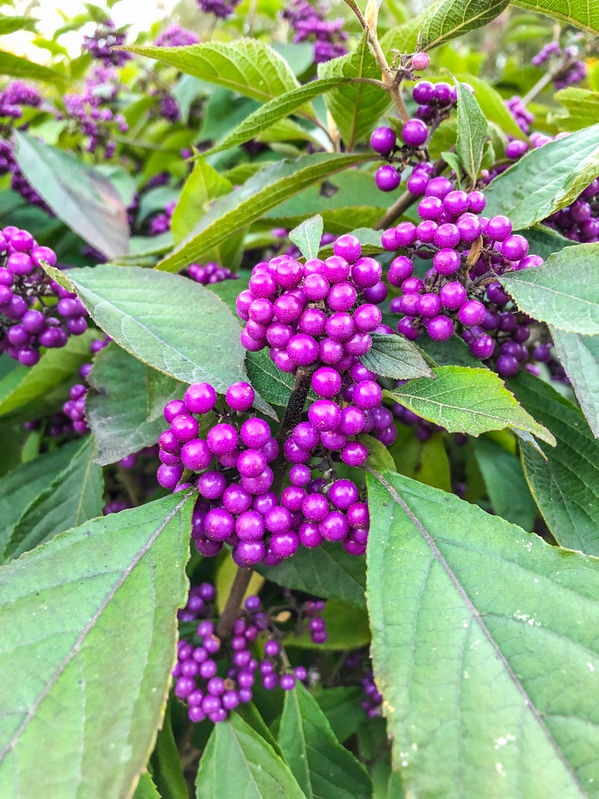 This colourful berry looks like a purple M&M in berry form, with the bright colours usually found in a McDonald’s childrens’ play area. Yet not only is this berry completely real and not plastic, but extremely common in the southeast USA. American beautyberries are found in Georgia, Florida, and Arkansas alike, where they typically grow in thickets along the edges of forests. Their acne-clearing potential was first discovered in a 2019 study which used 31 different samples of beautyberry. All of these had strong activity against p.acnes bacteria. While none quite matched the antibiotic clindamycin, 8 of the 31 extracts crushed p.acnes by 100%.
This colourful berry looks like a purple M&M in berry form, with the bright colours usually found in a McDonald’s childrens’ play area. Yet not only is this berry completely real and not plastic, but extremely common in the southeast USA. American beautyberries are found in Georgia, Florida, and Arkansas alike, where they typically grow in thickets along the edges of forests. Their acne-clearing potential was first discovered in a 2019 study which used 31 different samples of beautyberry. All of these had strong activity against p.acnes bacteria. While none quite matched the antibiotic clindamycin, 8 of the 31 extracts crushed p.acnes by 100%.
The best part was that the scientists craftily chose 10 different p.acnes strains, understanding that some (especially p.acnes family 1a) are far worse than others. Beautyberries were capable of inhabiting all 10 strains, ruling out unusually resistant colonies. Next the scientists tested biofilms, and like impepho, beautyberry was able to cleave through these hardy microscopic structures.
Destroying bacterial biofilms is a relatively rare power in the acne world, unlike lowering inflammation, which is always welcome, but fairly common. American beautyberry has several rare compounds such as intermedeol and callicarpenal, which may explain the rare power.
Four – hops
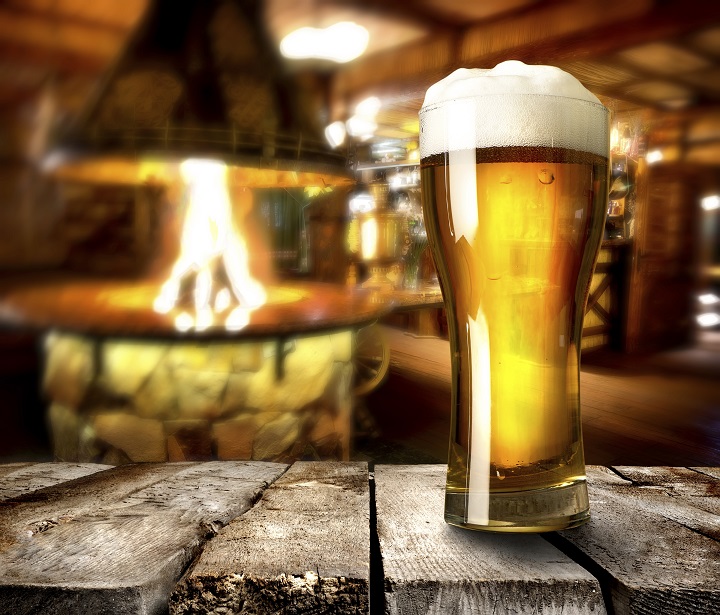 Hops is one of three key ingredients in all types of beer, alongside malt and water. These are the only three ingredients beer is allowed to contain, according to commandments laid down by a clique of wise German beer elders from the 16th century. The hops herb had never been viewed as an acne remedy – it was more popular for deepening sleep in the 19th century, by gently applying to your pillow. But that changed in a 2019 study where the two main active compounds of hops were compared to the antibiotic clindamcyin.
Hops is one of three key ingredients in all types of beer, alongside malt and water. These are the only three ingredients beer is allowed to contain, according to commandments laid down by a clique of wise German beer elders from the 16th century. The hops herb had never been viewed as an acne remedy – it was more popular for deepening sleep in the 19th century, by gently applying to your pillow. But that changed in a 2019 study where the two main active compounds of hops were compared to the antibiotic clindamcyin.
Lupulone and humulone were both found to inhabit p.acnes bacteria especially strongly, requiring concentrations of 3.2 µg/mL vs 9.4 µg/mL for s. aureus. Like impepho, they were especially powerful at cleaving through p.acnes biofilms, the structures that make them stubbornly resistant to treatment.
Even more impressive was potential anti-aging abilities. Humulone and lupulone strongly inhabited enzymes collagenase, elastase, and matrix metalloproteinases, which recycle and reduce existing collagen. This was borne out in the real world by increases in the actual proteins of elastin and collagen.
If you’ve ever slipped and fallen into a puddle of beer in a bar, there may have been a slight benefit for your face. Though never mentioned for acne, a report from Hildegard von Bingen in 1100 hinted at hops’ antibacterial powers, stating that it “fends off decomposition of beverages and increases shelf life”.
Five – cedar tree
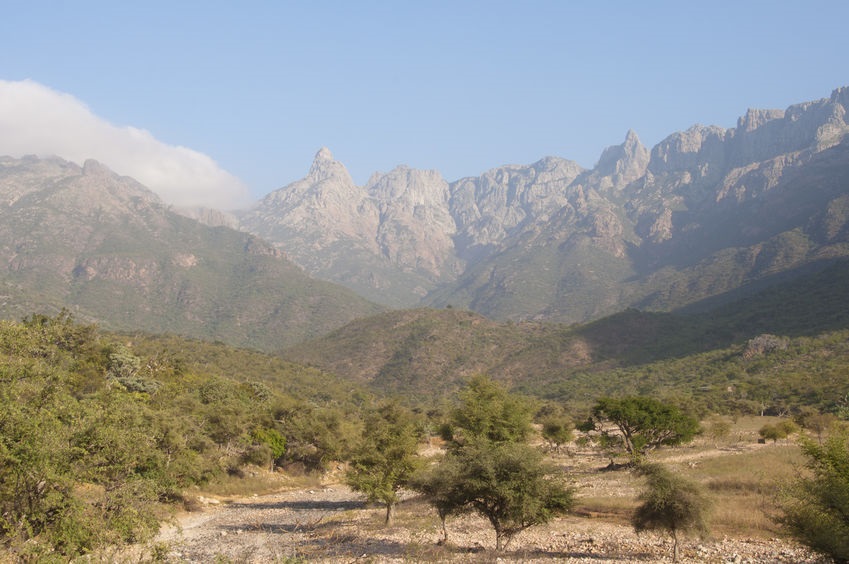 This biblical plant has the benefit of a study directly on human acne patients. Cedar grows across the middle east and Africa, from Sudan to Khouzestan (southwest Iran). This is a twisty tree with gnarly bark, which can grow to reach 65 feet tall. It thrives in warm and dry areas, coping in harsh landscapes of just 100-500mm of rainfall annually. One cedar tree south of Jerusalem is said to be 2000 years old, and theorised by religious scholars to be the source of Jesus’ crown of thorns.
This biblical plant has the benefit of a study directly on human acne patients. Cedar grows across the middle east and Africa, from Sudan to Khouzestan (southwest Iran). This is a twisty tree with gnarly bark, which can grow to reach 65 feet tall. It thrives in warm and dry areas, coping in harsh landscapes of just 100-500mm of rainfall annually. One cedar tree south of Jerusalem is said to be 2000 years old, and theorised by religious scholars to be the source of Jesus’ crown of thorns.
The study was relatively recent, conducted in 2019 (again), and divided patients into a cedar bark and clindamycin antibiotic group. The benchmark was a simple reduction in inflammatory acne, and after 6 weeks, clindamycin achieved a respectable 23.6%. Cedar meanwhile, achieved an impressive 50.1%. Non-inflammatory acne such as whiteheads also fell strongly, with a 35.5% reduction versus 15.6% for clindamcyin.
Cedar bark topical treatments aren’t on the market yet, though it’s possible that several pharmaceutical companies are all beavering away at once, each thinking that they’re the only one about to launch a product. Another great result was that the reduction in inflammatory acne persisted for a while after discontinuing the cedar, bouncing back to just 40.6% below baseline after 2 weeks, compared to a peak of 50.1%.
Six – Terminalia chebula
Terminalia chebula is a towering tree found in Pakistan, Nepal, and India, which can reach 30 metres high, and appears at altitudes up to 1500 metres in India. It’s popular for its shrivelled, nut-like fruit, with several ribs, which is one of 3 herbal remedies included in the revered Ayurvedic formula of Triphala. Terminalia chebula is traditionally believed to aid digestion, and wound healing and inflammation, which are both promising for acne. However, its newest acne power was more unexpected.
Several studies had tested the Triphala herbal combo, but a 2023 experiment tested the isolated Terminalia chebula fruit to ascertain its individual effects, in an oral supplement on human beings. The extract was standardised to contain 70% tannins, particularly the fruit’s two most notable medicinal compounds: chebulinic acid at ≥20% and chebulagic acid at ≥10%. The result: a large reduction in sebum, AKA oil production, after 8 weeks. The reduction was strongest in those whose sebum production was already elevated.
Although acne itself wasn’t tested, we don’t need to explain the benefits of less oily skin to you. There were also anti-aging properties, as the extract altered a swathe of enzymes. It suppressed the enzymes responsible for recycling collagen and elastin, which are necessary but can sometimes enter unnecessary overdrive: MMP-1, MMP-2, MMP-3, MMP-9, MMP-12. It upregulated several genes involving with collagen formation: COL1A1, COL1A2, COL1, COL3.
Terminalia chebula was dubbed the “king of medicines” by ancient Ayurveda, but its acne-clearing career is just getting started.
Seven – water spinach
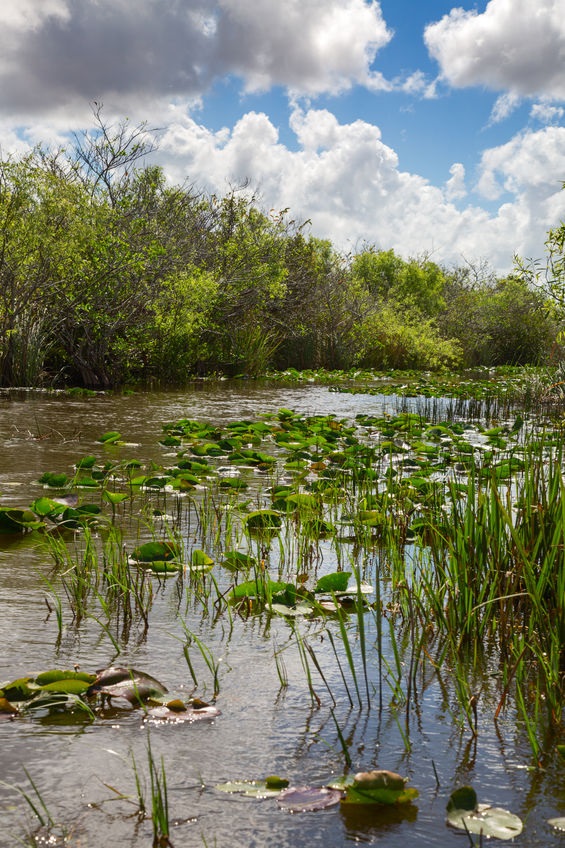 This common Asian river weed is probably the weakest on our list, but still an interesting new remedy. Water spinach is a rapidly growing plant whose stems can extend by 10cm in a single day. It grows to cover entire river surfaces, choking out the life below, extending in matting formation. It’s a popular vegetable in Malaysia, where the leaves are stir fried with garlic paste, shrimp and chili pepper.
This common Asian river weed is probably the weakest on our list, but still an interesting new remedy. Water spinach is a rapidly growing plant whose stems can extend by 10cm in a single day. It grows to cover entire river surfaces, choking out the life below, extending in matting formation. It’s a popular vegetable in Malaysia, where the leaves are stir fried with garlic paste, shrimp and chili pepper.
The first acne study appeared in November 2019, and analysed isolated p.acnes bacteria in a petri dish. A positive aspect was that it tested whole water spinach, not one isolated compound. By using an ethyl acetate extract, water spinach created a p.acnes inhibition zone of 27.67mm, a zone in which few p.acnes cells survived.
Water spinach didn’t match the antiobitic tetracycline, the blunt force instrument of doctors, but compared respectably, both for minimum inhibitory concentration (MBI) and minimum bactericidal concentration (MBC). The scientists believed that water spinach specialised in inhibiting bacteria’s growth, rather than ruthlessly hunting down and destroying every last remaining p.acnes cell. Water spinach is especially rich in the antioxidant quercetin, which can punch holes in a bacteria’s semi-permeable membrane when applied topically.
Water spinach has no especially unique acne powers, but may have more secrets to reveal yet.
Eight – Thai black ginger
Thai black ginger (Kaempferia parviflora) is a herbal remedy most popular in Thailand, and also found in Borneo and peninsular Malaysia. Like real ginger, the rhizome is used, dried and ground down into a fine powder. Traditionally, Thai black ginger’s benefits have all been in the physical fortitude realm. Supposedly, it can boost your capacity for backbreaking labour and even your long distance hillwalking capabilities. A 2016 study accelerated the hype train by discovering increased grip strength and response to erotic stimuli in humans.
Nobody considered acne – until 2023. Thai black ginger was treated to a study on live human acne-ridden volunteers, with 9 applying the remedy compared to 9 in a placebo group.
After 4 weeks, they enjoyed a reduction in acne of 36.52%. After 6 weeks, this accelerated to 52.20%. This was calculated using the globally recognised acne severity index (ASI), the gold standard used by scientists and universities in all developed nations. Likewise, the Thai ginger group had a pleasant 18.54% reduction in erythema after 6 weeks.
These great results came from a topical extract. Meanwhile, a separate review found that taking up to 1.35 grams of Thai black ginger daily had no adverse effects. It’s possible that you could benefit from a supplement too, while enjoying new super strength. As the study came out just last year, this is a treatment we’re not yet recommending, but watching closely.
Nine – Moroccan Cistus flowers
There are 20 flowers in the Cistus group and many of them inhabit rocky, mountains regions of Morocco. It’s possible that trekkers from Spain or England have walked right past these flowers while on hiking trails, fretting over their skin, not realising that they’d just stepped on a cure.
Cistus flowers are used medicinally to this day in Turkey, Italy, Greece and Spain, piquing the scientists’ interest. Two common flowers were selected, Cistus laurifolius and Cistus salviifolius, and the study had several stages. Firstly, they discovered a dense collection of phenolic antioxidants in the flowers, such as quercetin, luteolin and kaempferol. Next the flower extracts were tested on free radicals in an in vitro experiment (not in living creatures), to assess their actual antioxidant abilities. It was deemed that “all extracts possessed a noteworthy activity“.
This was followed by anti-inflammatory test, and of the two flowers, C. salviifolius was the stronger. They were taking it step by step, moving carefully, and finally, they arrived at acne bacteria. Both Cistus flowers strongly inhibited p.acnes bacteria, as well as secondary acne player Staphylococcus aureus. Again, C. salviifolius was the stronger flower of the two.
The main flaw was that none of this took place in live acne patients. Not was the inflammation they tested against actually connected to p.acnes bacteria, unlike with impepho where it specifically combatted p.acnes-induced inflammation. Additionally, quercetin, lutelin and kaempeferol are widespread antioxidants in nature. Cistus flowers might be a decent but non-unique remedy, or rarer powers may be discovered out of nowhere in a couple of years.
Conclusion
Of these 9 remedies, some will doubtlessly fall by the wayside, while others will ascend to the next level and become fully-fledged acne remedies. In 100 years, impepho might be spoken casually in the same breath as aloe vera or tea tree oil, while American beautyberry might be outside your Florida front porch right now (though guarded by cottonmouths).
When the next updates on these remedies arrive, whether positive or negative, you will hear about it right here, on Supernatural Acne Treatment.
Thanks for reading!

